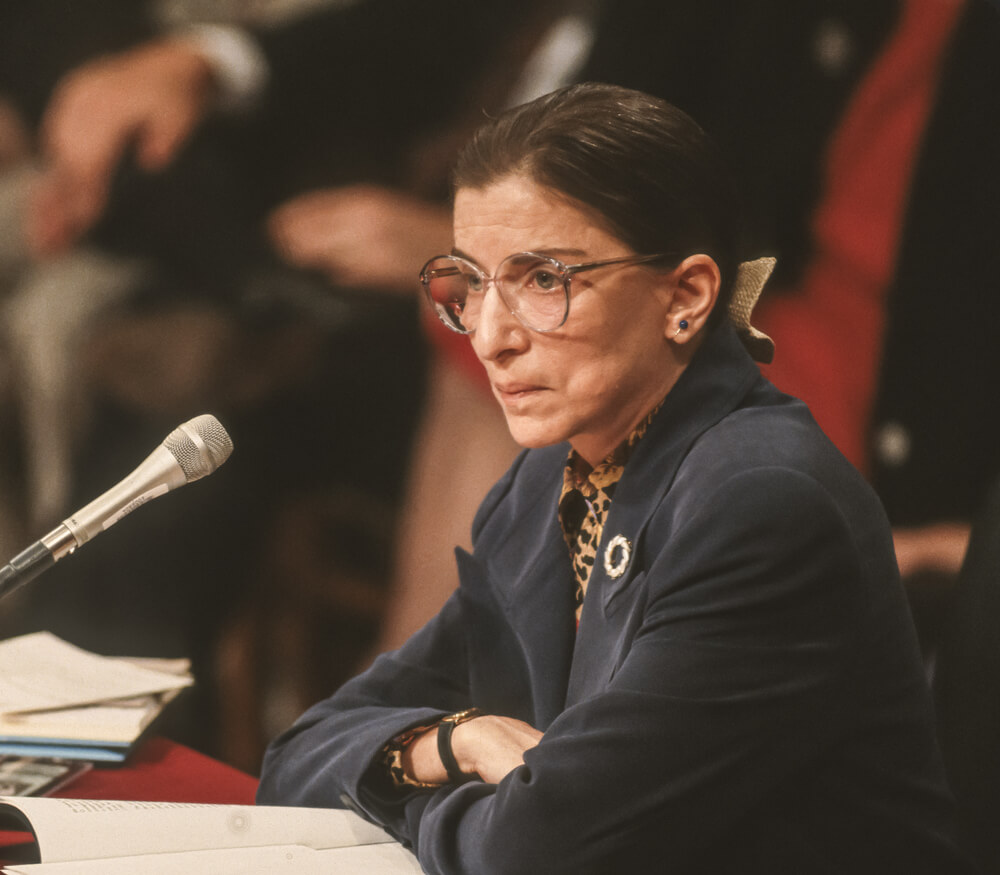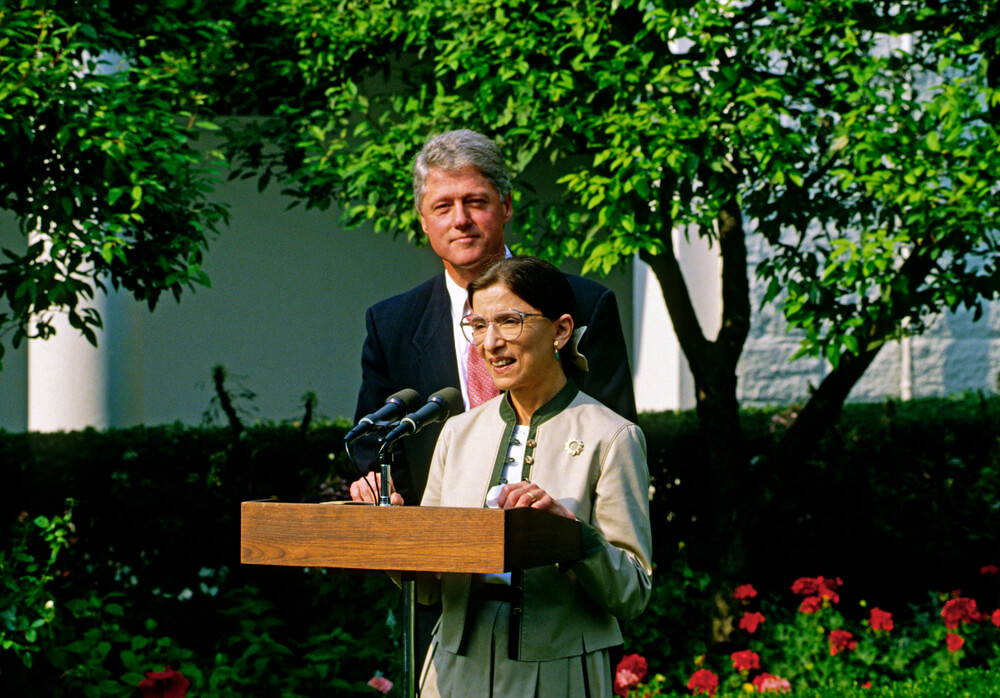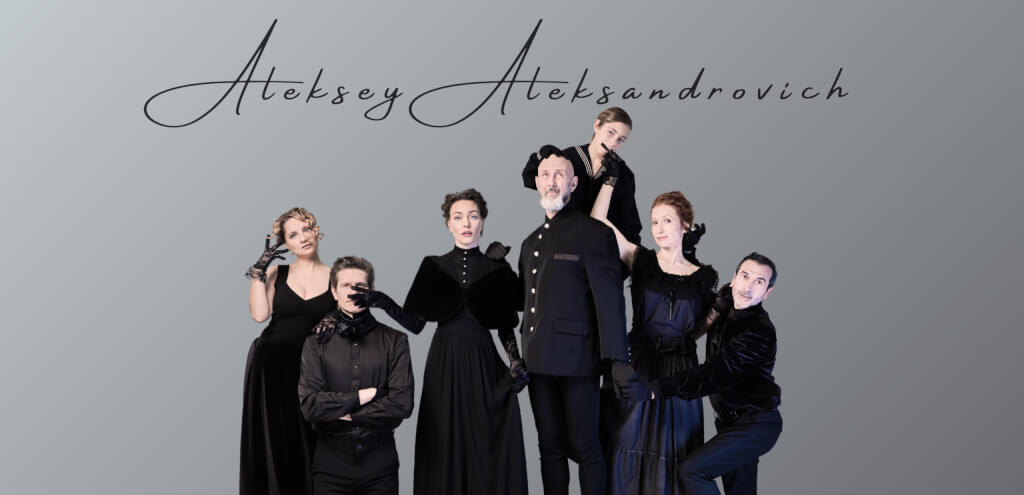A monument to the daughter of Russian-speaking immigrants was erected in Brooklyn: what is her merit
'15.03.2021'
Olga Derkach
Now legendary judge of Ukrainian origin Ruth Ginsburg has been immortalized in bronze. A statue of a judge appeared in the large City Point shopping center in Brooklyn. More details in the video "Voices of America".

Famous politicians spoke at the opening of the monument. They talked about the importance of Judge Ginzburg's activities.
“When Ruth Ginsburg started working as a lawyer, a woman could not get a mortgage without a male guarantor, could not open a bank account without a man, could not have her own business or get a credit card, could not get a bank loan, could not get a job that was considered male, could not sell the property without her husband's permission, ”said New York Assemblyman Joan Simon. - And when a woman went to work, she could be asked for a certificate of sterilization so that she would not get pregnant. Ruth's work changed all these conditions. Has changed for us, our daughters. "
Brooklyn President Eric Adams also spoke.
“Her contribution to the fight for the rights of LGBT people, the rights of women, the rights of ordinary workers, the rights of the inhabitants of this whole city, is enormous,” said Adams. - Her legacy continues to live on, although she is no longer with us. She was an example for others in the struggle for civil rights both in our city and throughout the country. "
Now in American society there is a "rethinking of heroes." This is already the 11th monument erected to an outstanding woman in the last 2 years in New York. Thus, the authorities and the public are trying to draw attention to the contribution of women to the development of American society.
On the subject: From washing dishes to own fencing school: how a Ukrainian coaches the US national team at the Olympic Games
Indeed, Ginsburg was an outstanding woman and an outstanding professional.
The life of Ruth Ginsburg
Ruth Joan Bader was born on March 15, 1933 in Brooklyn, New York. Her father, Nathan Bader, was a native of Odessa. Due to his Jewish beliefs, he was banned from attending local schools in imperial Russia. He immigrated from Odessa to Brooklyn (New York) with his family at the age of 13. His daughter not only received the education he so fervently desired, but also reached the heights of the American judicial system as one of nine justices of the US Supreme Court.
Ruth graduated from Cornell University in 1954 with a degree in public administration. In the same year, she married her college lover Martin Ginsburg. The couple moved to Fort Sill, Oklahoma. Ruth worked for the Social Security Administration but was demoted after she became pregnant with her first child, born in 1955.
Returning to the East, Ginsburg entered Harvard Law School in 1956 and then moved on to Columbia University Law School. When she received her law degree in 1959, she won first place on the course. But while trying to find a job, she found that most law firms are reluctant to hire her, despite her brilliant achievements.
“In the XNUMXs, traditional law firms were just beginning to refuse to hire Jews. But being a woman, Jewish and a mother to boot is too much, she once wrote.

Ginsburg eventually landed a job as a clerk with US District Judge Edmund Palmieri in Manhattan, before moving to Rutgers University, where she was a professor of law from 1963 to 1972. She became pregnant with her second child while attending Rutgers University and, fearing dismissal, hid her growing belly by wearing baggy clothes. Ruth gave birth during summer vacation in 1965 and returned to work in the fall. She then taught at Columbia University, becoming the first full-time teacher there.
Ginsburg has dedicated her life to changing the social norms that made her own career so challenging.
In 1972, the Ginzburgs led a team of lawyers that successfully argued an appeal on behalf of a man who was denied a dependents tax deduction (he was bearing the cost of caring for an 89-year-old mother). This decision was the most important one for Ruth in her many years of struggle for gender equality and justice.
Ginsburg continued to challenge gender laws throughout the 1970s as a volunteer lawyer for the American Civil Liberties Union, for which she was also the founder and director of the Women's Rights Project. In 1980, President Jimmy Carter appointed her to the United States Court of Appeals for the District of Columbia. She served in this role until Clinton appointed her to the Supreme Court in 1993. In 1996, she wrote a majority decision that rejected the policy of admitting exclusively men to the Virginia Military Institute as a violation of the 14th Amendment.
On the subject: Both immigrants and Americans love: what they feed in the only Ukrainian banquet hall in New Jersey
Although she became a heroine for many activists, Ruth did not initially consider herself one of them. According to her, she fought for the legal rights of women "for personal, selfish reasons." And she never expected to go to the Supreme Court. In a 1993 New York Times profile, childhood friends recalled Ruth as a girl nicknamed “Kiki,” who knocked out her tooth by twirling clubs while playing on her high school soccer team.
“She was very shy and didn’t look cocky,” Anne Burckhardt Kittner, a close school friend, told the Times. "She never thought she was doing well in the exams, but of course she always took them."
Ginzburg voted for workers' rights and the separation of church and state. Her opinions and disagreements have often attracted attention with rude but eloquent explanations of her position. Her vehement opposition to Lilly Ledbetter v. Goodyear Tire & Rubber Co. in 2007, explicitly called on Congress to ease the statute of limitations for equal pay claims, noting that “an employee will know immediately if a promotion or transfer is denied. But pay inequality is often hidden from view. " Obama signed into law the Lilly Ledbetter Fair Pay Act, named after the plaintiff, in 2009.
In 2013, Ginsburg joined the majority in repealing the Protection of Marriage Act (DOMA) by ordering same-sex couples who are married in states where such weddings are legal to be entitled to the same federal benefits as heterosexual couples. In one of the highlights of the case, Ginsburg said in oral arguments that DOMA institutionalized "two kinds of marriage: marriage as whole milk, and marriage as skim milk." Just a few months later, she became the first Supreme Court judge to organize a same-sex wedding for her friend Michael Kaiser at the John F. Kennedy in Washington.
On September 18, 2020, Ginsburg died after a long illness due to complications from metastatic pancreatic cancer.







